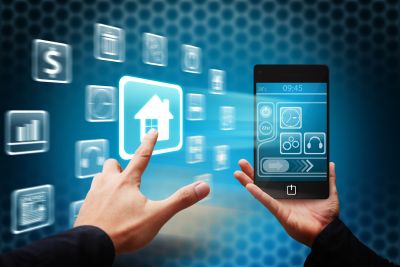Why quality and earned consumer trust will be key to entering the household
More and more connected devices are released onto the market every day, making the futuristic utopia of the sixties cartoon series The Jetsons, now seem an imminent reality. Hanna-Barbera’s futuristic imagination brought robots, holograms and flying cars to our TV screens. Over 50 years later, robots are entering our homes, holograms are taking the place of live performances and flying cars are being tested. The connected home is no longer a futuristic concept, it’s a reality.
The most successful connected devices are those that make our lives easier (or as some may say, allow us to be lazier!) – coffee machines, fridges, ovens and cars. Perhaps a better term to use would be the Internet-of-Your-Things. With 20.35 billion connected devices expected to be in use worldwide by the end of 2017, and predicted to increase to 75.44 billion by 2025, utilities and telecom service providers are in a race to take as big a piece – of this very large pie – as possible.
We recently conducted research into consumer perception of technology in the home to help better understand the barrier to entry providers may be experiencing. Unsurprisingly, British adults have a strong interest in the concept of the connected home – 89 per cent agree that a connected home would make their lives more convenient and 49 per cent feel a connected home would save them money on household running costs by being able to measure and manage the consumption of utilities. The appetite for a connected home is clearly there. The issue, however, is trust and ease of use. It must be simple to manage all connected devices for everyone, no matter their level of technical competence
There are several problems in the connected home, and these problems need to be fixed now. The sheer number of applications and innovative technologies entering the home is creating a fragmented consumer experience, far removed from the simpler way of living promised by the ideological connected home depicted in Back to the Future.
Consumers are driving business strategies and demand ease of use – they are demanding a fully integrated solution controlled centrally to both monitor and manage their entire array of services and connected products. This could lead to market consolidation with one single provider or service aggregator, whether they are from the consumer tech, utility or telco sector, reigning supreme. This is the race to own the home. And the race is on.
Gaining consumer buy-in
Many consumers may feel dubious about one single provider entering and controlling their home at such an unprecedented level. Contenders in the race to own the home must gain consumer trust and consumer buy-in now if they are going to succeed.
Connected devices monitor our lives to provide a better, tailored service. Consumers are willing to sacrifice a proportion of personal privacy in return for a technologically enhanced lifestyle, but the security of connected devices, which hold all this personal information is an issue.
Our research demonstrates the apprehension amongst consumers when it comes to the safety of connected homes; 43 per cent worry a connected home would be easier to break into than a standard home, and 56 per cent fear that the control applications for a connected home would be hacked into, which would prevent 48 per cent from buying them in the future. Surprisingly this figure rises to 61 per cent amongst centennials, those born in 1995 to the early 2000’s – the first generation to never know life without the internet. It is imperative that technology manufacturers calm this unease now if they want to venture further into the home.
Providers must acknowledge and prioritise the severity of a potential cyberattack on a consumer home. The risks are now very different to those when the only connected device in our homes was a PC that used dial-up. A cyberattack on a modern connected home is a serious breach that could potentially have dramatic consequences far beyond a negative impact on an organisation’s reputation. For example, if a home with young or elderly residents reliant on a connected home hub to regulate heating and electricity was hacked, the loss of connectivity could result in serious illness. Cyberattacks are no longer just about an industry or an individual company, they are personal.
Addressing consumer and regulatory concerns
Contending providers in the race to own the home must prioritise the need to address such safety concerns. Not only is this imperative to reassure consumers, but it is vital to ensure compliance with the general data protection regulations (GDPR), due to come into effect in May 2018, likely to impact all services handling increasing volumes of consumer data through the advent of IoT. To do so, service providers must make a conscious effort to reassure consumers that any connected devices are safe and secure. Samsung is a brand which has already adopted this approach proactively, understanding the importance of reassuring consumers, going so far as to include the message in their marketing efforts placing ‘excellence in quality control’ at its core to gain consumer trust.
To be in with a chance to ‘own the home’ providers must ensure that quality underpins not only the devices themselves but also customer interactions, their personal data and ultimately their safety.
Let the race begin.
[su_box title=”About Kevin Cunninghamx” style=”noise” box_color=”#336588″][short_info id=’102948′ desc=”true” all=”false”][/su_box]
The opinions expressed in this post belongs to the individual contributors and do not necessarily reflect the views of Information Security Buzz.



